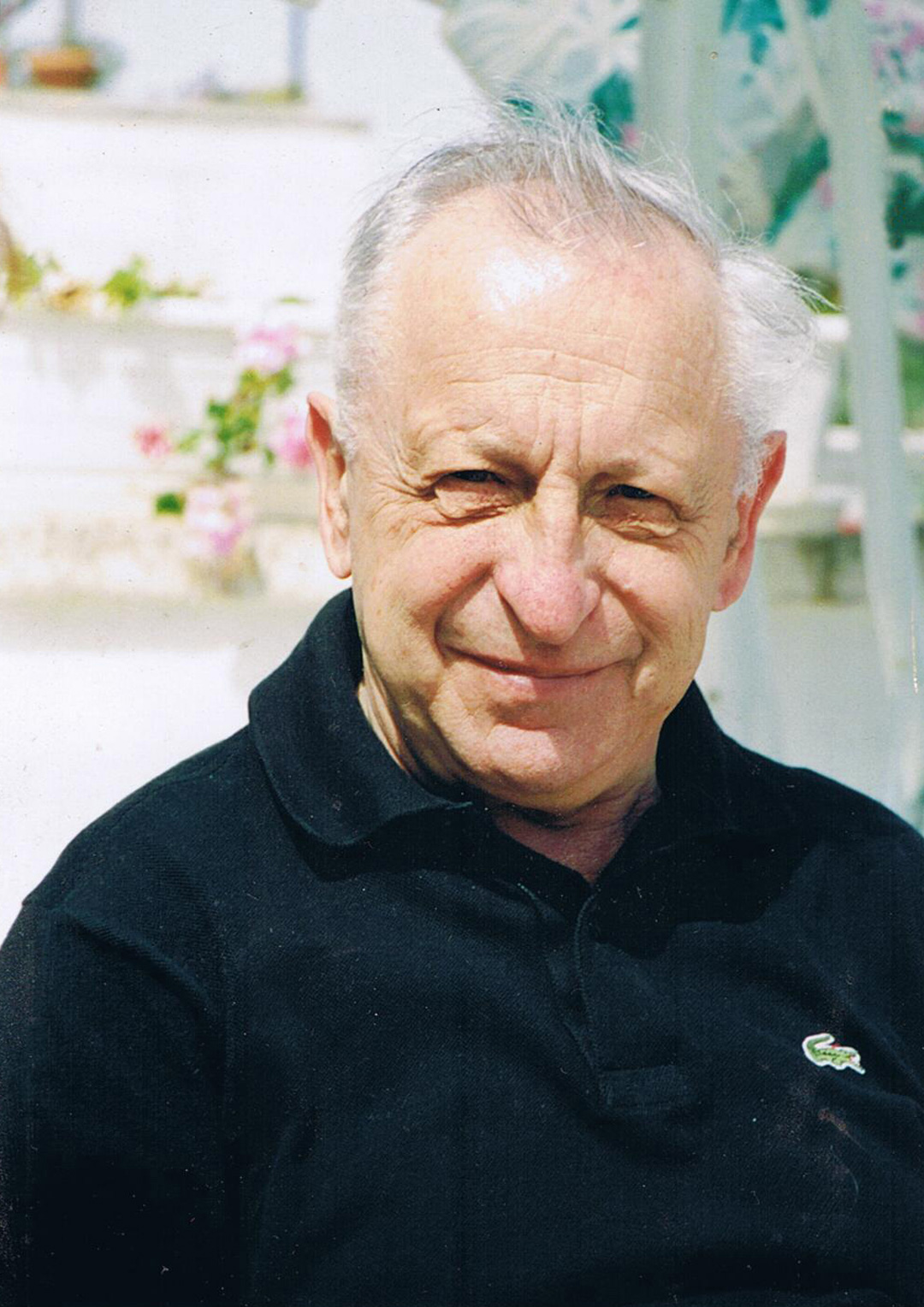Zev Birger
(born on 1 June 1926 in Kovno, died on 6 June 2011 in Jerusalem) Prisoner number: 85096
After turning a corner, we were suddenly blinded by a sea of light. A mighty, mountainous iron concrete arch was illuminated, from which countless iron bars stuck out – like a giant hedgehog. There was an enormous pit next to the dome that was also filled with reinforced concrete. This hell hole was referred to as the death chamber, and even the Kapos claimed that it was not easy to get out again alive.
– Zev Birger about the bunker construction sites
Zev Birger (formerly Wolf Birger) was born in 1926 and lived with his parents and older brother, Mordechai in Kovno. The family was shaped by a basic Zionistic attitude and belonged to the Jewish middle class.
When the Germans occupied Lithuania, the family had to relocate to the newly constructed ghetto in Kovno. Four of them lived there in a small room. Although the family had previously been financially well-off, they now suffered from the poor living conditions in the ghetto. Birger soon took up work as a plumber and then in a locksmith’s.
The ghetto was evacuated on 8 July 1944. For five days Zev Birger hid with his family from the SS, before they were finally discovered and transported to Stutthof concentration camp. From there, Birger, his father and his brother were deported to Kaufering II concentration subcamp.
They were put to work on the bunker construction site. Birger’s father died in November of prostate disease, his brother was deported to the Flossenbürg concentration subcamp Leitmeritz in early 1945, where he was executed after an attempted escape. Birger himself was brought to Kaufering VII quarantine camp, where he fell ill with typhus. In February 1945, the SS transferred him to camp IV. When the evacuation of the camp began, Birger went into hiding and was liberated by US American soldiers on 27 April 1945.
We carried on for another hour, passed a sea of completely rusted towing machines, tractors, diggers, cranes and all sorts of other machines that seemed like sea monsters to me, until we finally reached the goal of our night march: a massive reinforced concrete construction site. They were building a gargantuan dome there, 100 metres long, at least 80 metres wide and some 30 metres high. Despite the grotesque situation, I was stuck by the inventiveness and creativity with which the German engineers had masterminded such machinery for extermination. They had deployed all of their knowledge, skills and manpower for one goal: our death.
– Zev Birger about forced labor in the bunker construction sites
When the evacuation of the camp began, Birger went into hiding and was liberated by US American soldiers on 27 April 1945.
During the second half of April, they sent almost all inmates from our camp on a death march as well. We could already hear the shots from the approaching front (…) Amid the general chaos that now reigned, we scurried to the earth shelters and hid there. We buried ourselves under the straw and hoped that they would not search the barracks again. But they had other ideas. After the prisoners had left the camp, they set it on fire.
– Zev Birger about the evacuation of the Kaufering IV subcamp
Following his liberation and discharge from the military hospital, Zev Birger became an interpreter for US American soldiers. In the meantime, he helped Jewish Displaced Persons (DPs) who had fled from the Soviet Zone. He then became a member of the Alijah Beth, which assisted DPs to immigrate to Palestine. He himself emigrated to Haifa on 20 November 1947.


